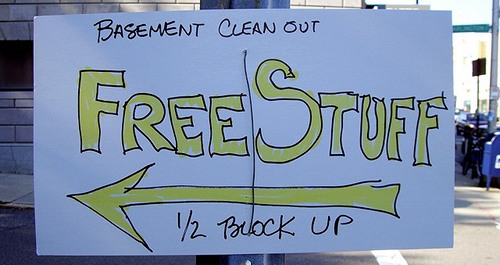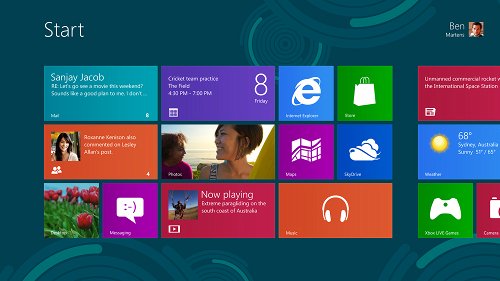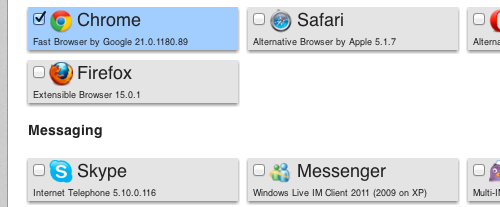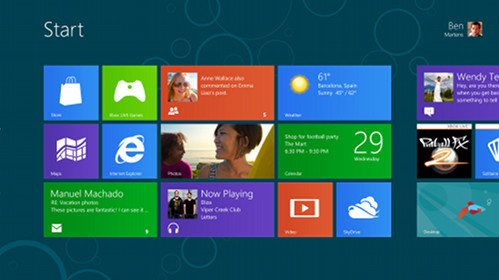Blog posts tagged software
Why new software isn’t always better software
 |
|
Image: Twin Design / Shutterstock.com |
Apple released iOS 8 recently. Demand for this new version of its mobile operating system was so high that UK internet traffic surged as people rushed to download it.
Yet shortly after it became available, a number of tech pundits cautioned owners of older iPhones against upgrading.
Specifically, people who own the iPhone 4S were warned that the new operating system could cause everything to slow down.
Don’t be an early upgrader
This high-profile upgrade perfectly illustrates a question that’s faced businesses time and time again: should we upgrade our software now, or should we wait?
Software companies rely on big releases to give them a revenue boost. That’s why Microsoft throws the full force of its marketing machine behind each new version of its Windows and Office packages.
It’s nothing new — when Windows XP came out in 2002, they even got Madonna involved. But if the history of software upgrades teaches us anything, it should be that it’s usually best to wait.
People don’t like change
There are lots of reasons to hold off installing a new version of software your business depends on:
- People don’t like change. Software companies often move things round when they release a new version of an old package. Even if this change is obviously for the better, it can infuriate your staff if they’re used to the old way of doing things. Just look at the reaction when Microsoft introduced its Ribbon interface with Office 2007.
- New software often has bugs. It’s impossible to create a complex piece of software with no bugs. And often, major new releases are when serious bugs emerge. Give it a few months and you’ll find the software’s much more stable. Take Windows Vista, which was so full of bugs on release that its reputation never really recovered.
- Your current package has life left in it. Although a newer version might be available, most software companies will continue to provide support and updates for older versions of software. For example, although Windows XP was released in 2002, Microsoft only stopped supporting it this year.
So, even if you’re dazzled by the promised benefits of a new piece of software, it’s nearly always worth stopping to think before you plunge in and upgrade.
That’s just as true if you’re paying a monthly subscription for software that includes access to upgrades. In the short term, it might still be better to stick with the old version.
(It’s worth noting we’re referring to major, paid-for upgrades here, rather than the free security updates and patches that software companies release much more frequently. You should install these promptly to protect your data.)
What to think about
Before you upgrade any software, stop and think carefully. Here are five key things to get your head round before you upgrade everyone in your company:
- What are the reviews like? Search online to find out what experts think of the new software. Check review websites and comments on sites like Amazon, too. These are a great way to find out how real people are finding the software in the real world.
- How urgent is the upgrade? Find out when support will end for the software you currently use. Although there’s usually a decent buffer, some software will require you to upgrade sooner. For instance, you might have to upgrade your payroll software to access the latest tax tables.
- What are the benefits of upgrading? Occasionally, upgrading software can transform your business. For instance, companies are increasingly building online features into traditional software, making it easier to share data. If the benefits are clear, it might be worth upgrading earlier.
- Can you test it first? Rather than inflicting the new version on all your staff at once, you can roll it out to a few people and see how they find it. This will also help you identify any issues that are specific to your company.
- What does your IT supplier say? Forget asking the software company. They’ll tell you to upgrade. But if you work with a good IT supplier, they can help you understand the likely benefits — and potential risks — of upgrading. With their help, things will go more smoothly.
Finally, don’t assume that blindly upgrading is the best option for your business. Recent years have seen the software landscape change dramatically.
Cloud computing services are capturing an increasing slice of the software market. In some sectors, these innovative services are a great alternative to traditional desktop software.
If you think you’re due an upgrade, it’s the right time to investigate the alternatives and see if there’s anything better out there.
What to do when your software does too much (or not enough)
 You know your company’s admin process better than anyone. But can you find software that matches it?
You know your company’s admin process better than anyone. But can you find software that matches it?
No. Of course you can’t.
Why? Because the software companies always come up with generic, one-size-fits-all solutions. Allegedly, that’s the most cost-effective way.
And it works, up to a point. For instance:
- If you only sell to companies in the UK, you can still use accounting software that has fields for international business addresses.
- If you’re not VAT-registered, you can use a VAT invoice template by just leaving the VAT boxes blank.
It’s a little frustrating, especially when you remember how much you paid for your software. But at some point, you’ll run into a problem that requires a workaround.
Perhaps this means you have to do your calculations in a spreadsheet and then copy the result into your accounting software. Or you end up producing quotes for work in Microsoft Word, but then create the invoice in Excel.
Wonderful extras
Sure, off-the-shelf software has wonderful extras, like storing people’s birthdays or converting yen to sterling. But there’ll still be no way of making your phone number print on delivery notes, or placing your logo exactly where you want it.
You can spend months looking for the right software, then more months trying to learn it. And even then you have to spend more time adapting your company’s processes to fit it.
But doesn’t every business have to waste months working with inadequate, inappropriate software?
No, I don’t think they do. Often, the answer is a bespoke relational database.
A database for your business
When you build your own database, an expert looks at how your business works, figures out which bit can be automated, and then makes that happen. The learning curve is shallow, because the new system is designed to fit around how you already do things.
You don’t have any features you won’t use. And as your company grows, you can adapt the database to suit.
You’ll save some time because you won’t have to continue the ongoing search for software. And you’ll save more because everyday processes will be updated and speeded up.
- Do you need custom software?
- How much computing power is wasted in your business?
- When PowerPoint is not the right tool for the job
Martin Bridges is an expert in office admin and developing relational databases who works at dataBASED.biz.
The best free software that everyone should know about

(Image: Flickr user frankh.)
There are some pieces of free software that are too good not to share. In many cases, they're heaps better than paid-for alternatives that have crammed in useless feature after useless feature in an attempt to justify their cost.
Everyone should know about these great free tools, so to get your week off to a good start here's our guide to some of the best free Windows software out there. Please add your own suggestions in the comments too.
Audio and video
- For playing video, get VLC. It's a small video player that's fast, reliable and can handle virtually any type of file.
- If you need to record and edit audio, Audacity is probably all you'll need. It makes it easy to record, edit, chop and change audio.
Documents
- Sumatra is a super-fast PDF reader. It's a decent alternative to Adobe Acrobat Reader (which everyone uses), because it's very fast and small.
- A good free alternative to Microsoft Office is LibreOffice. It can even open Microsoft Office files, although you may run into the occasional layout glitch.
Security
- Microsoft Security Essentials is lightweight, free security software that works on Windows 7, Vista and XP. It'll guard you from viruses, spyware and other nasty threats.
- We've explained before how encryption can protect sensitive data safe. Free encryption software, TrueCrypt, helps you scramble your precious files.
- Always forgetting your passwords? LastPass keeps track of them for you.
- If you need to dispose of an old computer, use Darik's Boot and Nuke to scrub your hard drive clean of sensitive data.
Photos and images
- Paint.NET is superb free software for editing images and photos. It's not as good as Photoshop, but it's much, much cheaper and easier to use.
- You can also try the unusually-named GIMP. It's a little more powerful than Paint.NET, but also a little harder to get to grips with.
DVDs and CDs
- To burn CDs, DVDs and Blu-rays, just grab ImgBurn. It's free, lightweight software to burn discs flawlessly.
IT management
- Zip over to PortableApps.com to get portable versions of key software that you can run from a memory stick. (I used to use the portable version of Firefox on an employer-provided computer than only had Internet Explorer on it.)
- Every now and then we rave about CCleaner, simply because it's the best tool there is to speed up your computer by removing junk software, settings and files.
- Ninite lets you install all your standard software in one go. It's great for setting up new computers and we've even explained exactly how to use it.
What are your favourite freebies? Leave a comment to share your recommendations.
Does your business need Windows 8?

The new Windows 8 interface (Image: Microsoft).
Recent years have seen an explosion of new mobile devices, laptops and tablets - plus the emergence of new social media platforms and cloud computing services.
The result? Companies of all sizes are under pressure to integrate these devices into everyday working life.
With Windows 8 now available in the UK, companies face a new dilemma. Should they upgrade their existing devices to this latest Microsoft operating system?
Well, it's just like any other technology. You need to ask one key question before making any investment: how will it benefit my business?
Windows 8 flexibility
Windows 8 has been designed to support a more flexible way of working. This makes it an attractive proposition to small companies as they will be able to move between working on conventional PCs, tablets and mobile devices - and back again - without interrupting their workflow.
It's geared towards empowering users of touch devices and will ensure that tablets and portable connected devices are truly viable business tools.
In addition, businesses are realising that the bring your own device (BYOD) phenomenon is more than just a passing trend. According to recent research from Dell and Intel into the evolving workforce, 76% of small businesses are already implementing flexible working and 40% of employees have the opportunity to bring their own device to work.
Windows To Go
Windows 8 includes a new Windows To Go feature that can be extremely useful for small companies. It allows you to start Windows from a USB stick or other external storage device, like an external hard drive.
Essentially, it lets you take your desktop with you. When you boot it up - on any PC - you see a direct reflection of your business desktop, with access to the same Windows 8 account, apps and files.
It’s perfect for small businesses whose employees have to travel a lot, and means you don't have to go through the hassle of setting up a virtual private network (VPN).
Security and support
Data is the lifeblood of every company, and the level of security in any new software is always a key consideration for businesses. Windows 8 now includes anti-malware protection that's wired into the operating system.
This new Secure Boot Technology guards the device from the moment it switches on, protecting against unauthorised operating systems and pre-boot attacks.
To upgrade or to wait?
While new technology will continue to emerge, the most intelligent strategies for business are the ones that are sympathetic to the needs of both the workforce and organisation. Usually, you want to achieve productivity gains.
Whether you decide to upgrade to Windows 8 now, wait until it’s more widely adopted or decide not to switch at all, it’s worth reviewing and considering before you make a decision about what it could bring your business now and in the future.
- Windows 8 to spark tablet war?
- Microsoft wants every computer to have a touch screen
- Learn about system upgrades
Andrew Miller is a technology marketing consultant at Dell.
Five Windows 8 features that could benefit your business
 Windows 8 is here. Well, just about. The launch event takes place this afternoon, and the good folk over at PC Pro are covering the whole thing via their live blog.
Windows 8 is here. Well, just about. The launch event takes place this afternoon, and the good folk over at PC Pro are covering the whole thing via their live blog.
Although the launch is today, it's a fair bet that many companies will put off upgrading their computers to Windows 8. Historically, it's been a good idea to let Microsoft iron out any teething problems first. (If they're happy with Windows 7, plenty of companies will probably hold off for Windows 9.)
Key Windows 8 features
How to get Windows 8You can upgrade to Windows 8 for £14.99 if you bought a PC with Windows 7 on or after 2 June. If you have Windows XP or later, you can upgrade to Windows 8 Pro for £24.99 until 31 January. You must download the software from Microsoft to claim this price. Alternatively, retailers like PC World Business, eBuyer, Dabs and Misco all sell Windows 8. Your IT supplier may be able to advise on which edition is best for you. |
As with any new software, there are lots of new features. Most obvious - and controversial - is the new interface.
It's bye-bye to the Start menu, and a distinct relegation for the desktop, which is to be replaced by a touch screen-inspired interface. We wrote about this a week or so back.
But there are lots of other changes too. Here are five of the most important:
1. Live tiles
What is it?
This is part of that famous new interface, once dubbed Metro, now being referred to simply as the Windows 8 user interface (snappy, eh?).
The key change is that your desktop is replaced by a screen of tiles. You can click them to launch apps, but they can also show information in real-time.
Emails, diary appointments, tweets, Facebook updates, web analytics - live tiles could be like a dashboard for your business.
Is it any use?
Yes, abosolutely. It can be an at-a-glance guide to all the things that matter to you. That's assuming you decide to opt for the new interface and don't just switch it off in favour of the old-fashioned desktop, of course.
2. Windows To Go
What is it?
Effectively, Windows To Go lets you carry your computer on a USB memory stick. Just pop it into another PC and your desktop will open, complete with all your programs, files and everything.
You'll need to be signed up for a Microsoft Account for it to work propery, because Windows To Go will need to transfer files and settings to the PC you're using over the internet. But the idea is you can pop your USB drive into a PC - almost any PC - fire it up and start working with your usual desktop.
Is it any use?
If could be good for a business that wants to let employees use their home PCs for work. It should be an effective way to keep personal and business data separated in that scenario.
But I think take-up will be limited outside the IT professional market. Many firms will just prefer to issue laptops to staff.
3. Secure boot and built in anti-virus
What is it?
Microsoft is ramping up security, adding a new start-up procedure which blocks viruses from running the moment a PC starts up. Windows 8 will also come with integrated security software, so many companies will feel they can do without third-party security software.
It should all add up to an operating system that's safer from viruses and other threats.
Is it any use?
At face value, yes. The only slight worry is that if everyone ditches third-party security software, life might become easier for the creators of computer viruses, because they'll only have to worry about getting round a single security package.
4. Restore PC
What is it?
If your computer's suffering problems or running slowly, this feature makes it much easier to revert to a clean copy of Windows without deleting your data and files in the process.
Is it any use?
If you've ever wasted the best part of a day wiping your computer, reinstalling Windows and then restoring all your software, you'll appreciate this. Of course, if you take good care of your computer and don't install stuff willy-nilly then you shouldn't have to use it.
5. Faster boot times
What is it?
Microsoft has changed the way Windows starts, claiming that Windows 8 takes up to 70% less time to start up than Windows 7.
Is it any use?
It's not going to have you lining up to upgrade, but if it stops those 'I'll just go and have a cup of coffee' moments as you wait for your computer to start up in the morning then it'll certainly have benefits.
There are, inevitably, lots of other improvements and changes to Windows 8. More information is available over on the Microsoft website (along with an intriguing picture of a bearded man next to a giant floating tablet computer).
We'll have another blog post looking at some of the benefits of Windows 8 tomorrow.
Friday Donut tip: get the software you need in one go

Choose your software on the Ninite website, then download to install.
Once that first flush of excitement about getting a brand new computer has faded, you have to cope with the annoying job of installing all your usual software. What should be a simple process often involves downloading lots of different files, waiting while each package installs, and scrabbling around for software CDs.
Even worse is when you're having to reinstall everything on your computer. Nightmare.
However, this week I found a tool that makes this process a bit more straightforward. Ninite lets you choose what you want to install on your computer, from a big list of popular software. Then it bundles your choices up into a single file for you to download and run.
Here's how to use it:
- Go to the Ninite website (www.ninite.com)
- Scroll down the page to see all the software you can install
- Click each item you want to install, so there's a tick in the box (see image above)
- When you get to the bottom of the page, click the Get installer button
- A file will download to your computer
- When it's finished downloading, open the file
- Follow the instructions on screen to install all your chosen software
Depending on the packages you've chosen, it could take a while to install everything, but you can just let your computer get on with it while you go off and have lunch or something. When you return, all your software will be ready and waiting.
It also looks to be a great way to install a standard set of programs onto company computers. In fact, Ninite offers a Pro version, with the ability to manage computers remotely, over your company network. We've not tried it, but it looks to have some really handy features for managing computers on small networks.
Previous Friday Donut tips:
Six questions to ask about your new CRM system
 Introducing a new CRM system to your business is a significant project. To make sure you spend your time and money wisely, there are some key questions to ask right at the start.
Introducing a new CRM system to your business is a significant project. To make sure you spend your time and money wisely, there are some key questions to ask right at the start.
Big names in CRM include Salesforce, Sage, Microsoft and Maximizer. But the best way to pick the right system for your business is to ask these six questions:
- Are your staff on board? It is vital that your staff and any other stakeholders are on board with your decision to implement a new CRM system. You're going to need the support of everyone to make changes to your processes and procedures.
- What automation do you desire? You'll need to decide what sort of jobs your company wants to automate, and which you want the CRM system to do. Even with the best CRM software, it's still up to your business to use it effectively. However, it’s easier to evaluate different options if you know what tasks you need it to do for you.
- What input can your staff provide? Within your company there’s a vast network of professionals and experts. Every member of staff - not just those in customer service - needs to be focused on what type of CRM technology you want to implement as well as what the CRM strategy is. CRM is a company-wide tool that leads customers through your product funnel. It requires input from everyone.
- What type of training will you offer? Everyone involved with any aspect of your sales cycle should be trained in your CRM strategy as well as the CRM system. Although you’ll probably find that some training is available from your CRM supplier, you'll also need to make sure your other business training fits the CRM strategy.
- Where are users located? If your company consists of employees, contractors, and staff who aren't all in the same building it is important to consider how they will access the software. Cloud-based CRM applications can be a good option. They allow users to sign on from anywhere with an internet connection, often using mobile devices like smart phones.
- What is your budget? You need to know what your IT budget is before you even start looking at CRM technology. It comes in all price ranges, so if you go in with a good idea of what you can spend, you'll be able to throw out options that you cannot afford.
You’ll also need everyone’s expertise to find an application with the right features. For instance, it will be difficult for one person to decide what automation is needed within the sales department if he or she is doesn’t work in that department.
As with any significant IT investment, do as much background research as you can into CRM as a process and CRM as a software application.
GetApp – the company I work for – has worked with industry professionals to create a free, informative eBook: Powerful Customer Relationship Management For Small Business.
- How a back office system helped my business
- OMG! Are you AOK for CRM?
- Six cloud services we use to run our business
Image of bad customer service from Flickr user antwerpenR under Creative Commons.
PowerPoint is not the right tool for the job
 If you've ever had the misfortune to suffer death by PowerPoint, you'll know how unpleasant this thoroughly modern ailment can be.
If you've ever had the misfortune to suffer death by PowerPoint, you'll know how unpleasant this thoroughly modern ailment can be.
Sitting through a presentation that consists of 60+ slides of dense text is not a pleasant experience. It's made worse when the person giving the presentation insists on reading through every block of text, in full. Using a slow, monotone voice.
And that's not even the most inappropriate use of PowerPoint I can think of. Not by a long way. At least it's being used to give a presentation, no matter how mind-numbingly tedious.
Probably because it comes as part of Microsoft Office - which almost every business uses - PowerPoint seems to be the tool people reach for when they're not quite sure what they need. More than any other piece of software I can think of, it gets treated it as some sort of Swiss Army Knife, as if it's perfect for all sorts of tasks.
Well, it's not. Here are three things it's not designed for, and why you really shouldn't use it for them:
- Website wireframes. PowerPoint is singularly bad as a tool for designing the layout of your website, unless you want it to consist of identically rectangular pages with badly aligned sections and garish text. Try Balsamiq mockups or mockingbird, or go old skool and sit down with a bunch of markers and some A3 paper.
- Saving screenshots. Need to send someone a snap of your screen? Don't save it as a PowerPoint file. It takes up much more space than it needs to and the person on the other end might not even be able to open it. There are better ways, like just pasting the screenshot straight into an email.
- Creating posters and leaflets. PowerPoint slides are designed to be displayed on screen, not printed. It's tricky to line up elements precisely and when you add fonts and images, your slides tend to change in other ways too. Do yourself - and your printer - a favour and use a package that's meant for the job, like Microsoft Publisher (around £80 from Amazon or PC World Business).
Using software to do things it's not meant for isn't usually a good idea. There's almost always a good, cheap or free tool that you can use to do a better job. So next time you're tempted to use PowerPoint for anything other than a presentation, stop and think about whether you could find something better.
- How to deliver a great PowerPoint presentation
- Three essential keyboard shortcuts
- How open source software help your business
Image: Flickr user erix! under Creative Commons.
Will you have to upgrade to Windows 8?

If you decide to use it, this is what Windows 8 will look like.
Windows 8. It’s the forthcoming new version of Microsoft’s overwhelmingly dominant operating system. Due for release in the autumn, it looks designed to bridge the differences between tablet and desktop computers. So, will it retain the features you’re used to, and what will it do for businesses?
If your business still uses Windows XP, Microsoft’s decade-old operating system (and still one of the best it’s ever created), you’ll need to pay special attention to Windows 8. That’s because Microsoft will stop offering security updates for Windows XP in April 2014, pretty much forcing you to upgrade to either Windows 7 or 8.
On the one hand, Windows 7 (the current version) is tried and tested. But Windows 8 is likely to last longer overall – and will offer new features that could benefit your business.
For starters, Windows 8 is aiming to be all things to all users. It aims to bridge the current gap between tablet and desktop computers. As an operating system, you’ll be able to run Windows 8 on a desktop computer, a laptop, a netbook, or a tablet.
Since it combines both a desktop and tablet functions, the question is whether they will all integrate and work together seamlessly. I’ve taken a look at a preview version of Windows 8, and these are the biggest changes I’ve seen so far:
- No more ‘Start’ button. Instead, you’ll be relying on the Windows Metro screen (pictured) which contains ‘tiles’ you can swipe and tap to launch applications.
- Your desktop isn’t so central. Instead of being at the heart of Windows, the desktop will be just another app that you can run from the Windows Metro screen.
- It’ll start faster. Finally, Windows 8 should put an end to those long, frustrating waits to get up and running at the start of the day.
- You’ll have some learning to do. The interface of Windows 8 is going to be substantially different to what’s gone before. Expect a steep learning curve.
- It’ll be good for touchscreens. The new interface is designed for touchscreens, so it should be easy to use by swiping, tapping, pinching and zooming the screen.
- It could be distracting. The home screen can contain newsfeeds, tweets, Facebook updates … all the things that you want to close down when you’re trying to focus.
However, one thing you can rely on is that you’ll still be able to use your favourite productivity tools like in-house software, spreadsheets, accounting software, word processors and graphics software. They should all run faster in Windows 8, too.
Kelly Smith has worked in the IT support industry in Kent for several years and has seen the constantly changing face of technology first hand and its effects on business. She currently works for Barton Technology.
Friday Donut tip: changing text capitalisation
This Friday's IT Donut tip gives you an easy way to ease the irritation that comes from hitting the caps lock key without realising it.
It's easy to accidentally tap the caps lock key when you're typing fast - perhaps focused on an important email or engrossed in a report. Before you know it you've ended up with A WHOLE PARAGRAPH OF UPPER-CASE TEXT. And unless you're trying to be rude by SHOUTING in an email, that's probably not what you wanted.
No need to panic. While you might be sighing in frustration at the prospect of deleting and re-typing it, there is an easier way. Just try one of these options:
 If you're using Microsoft Word (available as part of Microsoft Office or as a standalone package), there's an option to fix this. Highlight the text, then make sure the Home tab of your toolbar is selected. Look for the change case icon, which is an uppercase and lowercase 'a' next to each other (see image).
If you're using Microsoft Word (available as part of Microsoft Office or as a standalone package), there's an option to fix this. Highlight the text, then make sure the Home tab of your toolbar is selected. Look for the change case icon, which is an uppercase and lowercase 'a' next to each other (see image).
Click it and you'll see several options. Choose the appropriate one and the highlighted text will change.- No Microsoft Word handy? There is - of course - a website that can hep you out too. Just visit Convert Case, paste your text into the box, then click the relevant button. You can convert to all lowercase, uppercase, or a mixture.
- If you've typed the text into a website (perhaps you're leaving a comment on a blog), it's easy enough to fix too. You'll need to be using Firefox to browse the web. Just install the Case Changer add-on. Once you've done that, you can change the case of any text you enter just by right-clicking it.
Have you had any caps lock nightmares? Let us know how you get on with these tips.
Previous Friday Donut tips:
Friday Donut tip: four easy ways to stay focused while you work

Do you use your time wisely? (Image: comedy_nose on Flickr)
This Friday's IT tip isn't a great shortcut or an essential way to stay secure. It consists of four simple ways to deal with all those distracting time-sinks that your computer makes so readily available.
With new emails arriving frequently, tweets piling up, Facebook updates, instant messages and more, it can be hard to stay focused on the task at hand. You might kid yourself that by constantly jumping between different windows you're multitasking, but actually you're probably just being inefficient. Here are four strategies to help you cope:
- Go full-screen. Many bits of software - including Microsoft Word and most web browsers - have a full-screen mode, which hides everything else on your computer. If you find yourself constantly refreshing your Twitter feed, going full-screen helps you to stay with the job at hand.
- Record how your spend your time. The excellent RescueTime is a service that monitors exactly how you spend time on your computer. It'll show you how much time you waste on Twitter, or spend looking at distracting websites. And how much you spend on real work. Its results can really shame you into action!
- Keep a clean desktop. As I type this, my computer's desktop is a mess of windows. I have ten web browser tabs open in two windows, several documents in the background and some other bits and pieces. Each is a potential distraction. So don't do what I do: get into the habit of closing everything you don't need.
- Turn off new email notifications. If you're using Microsoft Outlook, its default setting is to pop up a little message every single time you get a new email. It's easy enough to switch these off, or you can just close Outlook altogether when you need to concentrate on something.
Does your productivity fall as you open more windows on your computer? How do you avoid distractions and stay focused on what's really important? Leave a comment and let us know.
Previous Friday Donut tips:
I need a new computer with Windows 98
 My business provides IT support to its clients. And increasingly, IT support isn’t just technology support; it’s business support. That’s because using IT as a strategic asset can set your company apart from its competitors, bringing you more sales and boosting your profits.
My business provides IT support to its clients. And increasingly, IT support isn’t just technology support; it’s business support. That’s because using IT as a strategic asset can set your company apart from its competitors, bringing you more sales and boosting your profits.
That’s the mantra I stick by and use as the yardstick for all my conversations with clients. Good IT will result in good business.
Not quite a straightforward upgrade
So, you can imagine my surprise when a new enquiry came in from someone who said they needed to update their IT equipment. On the surface it was a straightforward job: new computers, a server and updated software.
However, it turned out not to be quite as simple as I first thought.
Things took an unexpected turn when this potential client told me that the new computers had to run Windows 98. Yes, Windows 98, which was released nearly 14 years ago. It’s so old that Microsoft even stopped providing support for it in 2006.
When I pressed them on this, the conversation went something like this:
Me: “Why do you need to run Windows 98?”
Potential customer: “Well, we have this invoicing software that was set up for us years ago.”
Me: “Ok...”
Potential customer: “The guy who set it up doesn’t work here anymore.”
Me: “I think I see where this is going.”
Potential customer: “It only works on Windows 98 computers. We have a Windows XP machine but that won’t run the software, and our Windows 98 machines are dropping like flies.”
Me [after thinking for a moment]: “I think the key issue here is to look at the software and sort it out first, rather than try to just keep Windows 98 running indefinitely.”
Bespoke software can cause problems
This business was facing is an issue I see all too often. That’s software, written or installed by an individual (not an off the shelf product) which is ‘bespoke’.
It’s great for the first year or two, while the person that installed it is around and able to help. But 15 years later (yes, they said they’ve been using it for about 15 years!) it becomes a problem because the installer or designer is no longer around.
My plan in this case is to check out the software properly before making any further suggestions. I guess it’s probably some kind of customised spreadsheet or perhaps a bespoke database.
However, the key point is that this software is hindering the company’s ability to use IT effectively. It’s stopping them from being efficient, productive and responsive to new orders.
The lesson for us all is clear. It’s vital to get advice from IT professionals who understand your business and its needs both now and in the future.
Technical people are fantastic. They can do magic things to fix software or resuscitate a dying PC. But it’s my experience that they often fail to consider the needs of your business. When you’re looking at a big investment in new software and equipment, they are far more important.
- What to ask when choosing an IT support company
- How to avoid problems with software developers
- Do you really need custom software?
Craig Sharp is MD of Abussi.
Why your software doesn't do what you wanted

Don’t end up with software that’s like a square peg in a round hole
When you buy software you assume it will do everything you need it to do for your business. After all, the marketing literature said so! But after they have committed to purchase and installed the software, many businesses discover that:
- There are limits to the expected functionality
- They need to buy new equipment to get any benefit
- Some functions are not part of the basic package so they need to purchase add-ons
- Their PCs and network need to be upgraded
- They need to bring in technical support to set up or make changes
If this happens to you, you’ll find you have not bought what you thought. Worse, you’ll have incurred unplanned and unbudgeted additional costs.
Why your software requirements matter
The most important thing to do before buying software is to clearly define, communicate and agree your requirements up front. Then agree objective acceptance criteria so both you and your supplier know exactly what is expected: you won’t sign off the software until it meets these criteria.
Often, achieving this seems as likely as me winning the pole vault in the 2012 Olympics (I’m not keen on heights!).
Indeed, the analysis and thought process involved in establishing your acceptance criteria can, in itself, ensure you are objectively considering what your business needs. Establishing success criteria forces you to ask the right questions when considering an investment in software.
How to define your requirements
These are the kind of questions you should ask when it comes to defining requirements:
- What are my business objectives? For instance: quality, automation, clear business processes, return on investment, reduced timeframes.
- What features and capabilities need to be delivered? Be explicit.
- What constraints must be applied? For instance: cost, timescales, business process change, risk, infrastructure, maintainability, upgrade.
- What are the longer term requirements and does the software need to support a longer term strategy? Essentially, does the software need to grow with your company?
- What are my acceptance criteria?
The last one is key, because acceptance criteria enable you to establish clear, objective measures that will ensure both parties (you and the software supplier) know what is expected, what is being delivered and can be happy when requirements are met. They will cover areas such as:
- Specific capabilities and functionality - what do you need the software to do?
- Technical requirements - what kind of computers or network will the software need to run on?
- Performance requirements - how fast should the software run, how many users should it be able to handle, how much data should it be capable of processing?
- Training needs - how much training will be required and how will it be delivered?
- Business process changes - what changes will your business have to make to accommodate the software?
- Maintainance and support - how and when will these be provided and carried out?
The criteria have to be objective and defined to the right level of detail. Why objective? Tell two people you are thinking of buying a great new car and one will tell you to buy a Porsche and the other a Nissan. Perhaps that’s a bad example … I would go for the Porsche every time, but that just goes to show that we do not intuitively consider other people’s perspectives!
Avoid ‘satisfactory’ performance
Specifically, I have seen many companies make the mistake of defining criteria to say ‘performance must be satisfactory’. This is a totally subjective statement and could mean anything. It often results in endless unsatisfactory debates - once it is too late - about everyone’s interpretation of the word ‘satisfactory’.
The right business critical software can transform your business, but you need to know exactly what sort of transformation you are looking for – and you must be clear on why and how you will assure success.
Read more about buying software for your business:
- How to avoid problems with software developers
- Creating your IT requirements
- Choose and use IT suppliers
Susan Chadwick is co-founder of Edge Testing Solutions.
Olympic errors: why you should take testing seriously

Launching a new website can be stressful. Just ask the organisers of the London Olympics, who opened their ticket website last week. After last Monday's big switch on, it didn't take long for people to twig that the site couldn't handle debit and credit cards due to expire before August. Whoops.
Interestingly, reports say that 'the website and ticketing guide clearly state that Visa cards must expire no earlier than August 2011'. In other words, the expiry date restrictions were known about when the site launched, but people weren't reading the explanation before putting in their ticket applications.
It's a common problem: people don't bother reading instructions, then get frustrated when things don't work as they expect. In short: if you have to explain your website, it's too complicated.
Always test thoroughly
Before you launch a new website - or any IT system - it's really important you test it thoroughly. You need to catch all the bugs you can and ensure everything is secure.
But that's not enough. Your site must be easy to use too. Can people find what they're looking for? Is your order process straightforward?
It might be harder to answer these questions definitively (not everyone's perception of 'easy to use' is the same), but it's vital you do your best.
If you're working with a software developer or web design company, they'll be able to help you with all kinds of testing. And there's plenty of information about usability testing on the Marketing Donut, our sister site.
But whatever you do, put time and consideration into how you test any new IT system . It could make the difference between success and failure. Or - as the Olympics organisers have illustrated so well - it could help you avoid any unnecessary bad publicity.
(Image of a ticket booth from Flickr user Sister72 under a Creative Commons Attribution licence.)
Three IT tips to get you more organised

Buying a whiteboard could be the best £30 you spend
Ben Dyer from SellerDeck explains how to know where things are and get stuff done.
OK, put your hands up if you consider yourself a highly productive person. Now, keep your hands up if you are also incredibly organised. I doubt there are many of you left.
In our increasingly busy lives, it’s hard to stay productive and organised.
I am a self-confessed productivity junkie and always on the lookout for tips and tricks to make my life easier. Here are my top three; IT isn’t central to all of them, but then that’s because technology isn’t always the answer. I would love to hear what works for you.
1. Use the Nike rule to deal with distracting emails: just do it!
I used to subscribe to a mantra that banned multi-tasking. While we are all capable (yes, even men) of doing ten things at once, we generally don't do them particularly well. Focusing on a single task at hand is the best approach, but I can’t remember a single day in the past few years that’s contained little or no distraction.
So, my new method is the Nike rule. It’s really simple. When a distracting email arrives, if you can take care of it in five minutes, just do it. We process things quickly when they’re fresh and providing an instant response gives you the appearance of being highly organised.
If the distraction can’t be resolved within the allotted time then file it (see next tip) and ignore it till you have time. It’s quite liberating!
2. Use a low-tech task list as well as a high-tech one
The best bit of office equipment I own is the £30 whiteboard I bought last year. Sure, it’s low tech. But it’s also green and effective.
There is something quite satisfying about scrubbing a task off the board. Tasks that can be completed quickly go on the board. Everything else goes into my electronic task list. I use the brilliant Things app for Mac and iPhone, but my boss simply uses a text file. I’ve heard good things about Remember the Milk too.
Using the whiteboard first allows me to limit the size of my to-do list. That has to be a good thing.
3. Get to grips with digital filing
To me, the idea of cutting down a tree to turn digital words into print is utter folly. Paper is also a pain: it’s bulky, doesn't travel particularly well and usually ends up in the bin. What a waste.
It can also be really hard to find what you are looking for if it’s stored on paper. The Google generation is used to searching for anything, anywhere and this is a concept I like to apply to my paperwork with Evernote.
This digital filing cabinet allows you to store and index almost anything you like. I religiously scan and save all of my day-to-day paperwork into Evernote, as well as important documents, pictures and web pages I find interesting.
Evernote ‘reads’ this content and makes it all searchable. But the best thing about it is the mobile support. I have my entire filing cabinet with me wherever I go. It’s unbelievably useful.
(Image of a non-whiteboard from Flickr user dan taylor under a Creative Commons Attribution licence.)



